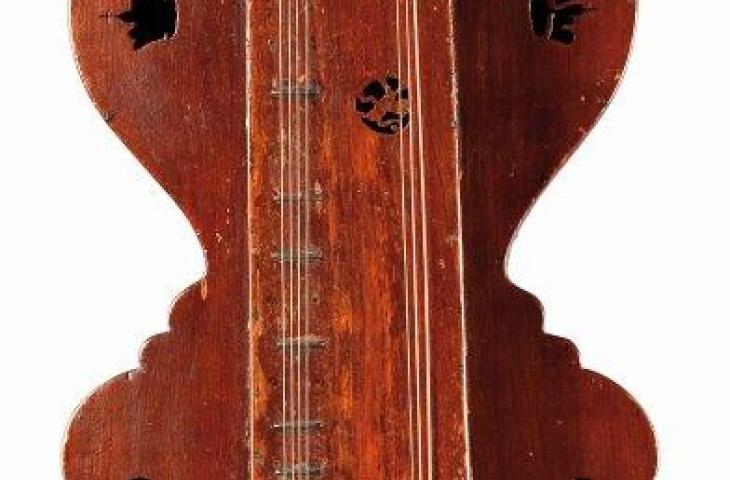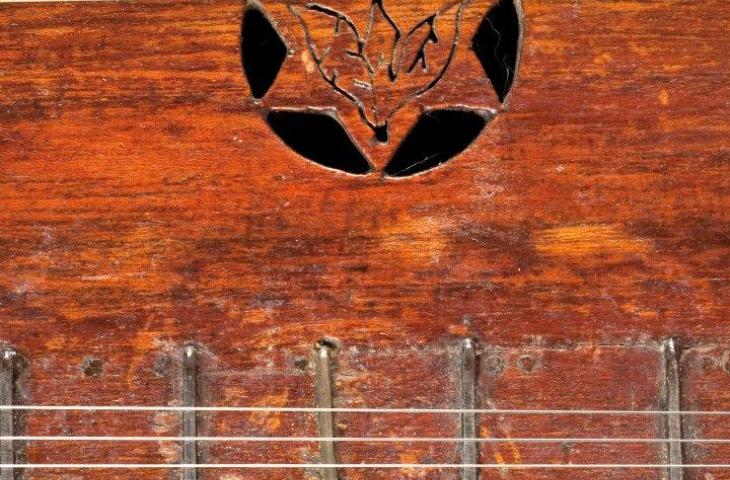Épinette

Hommel, Kortrijk, ca. 1905, inv. 1985.024
Hommel

Hommel, Kortrijk, ca. 1905, inv. 1985.024
Until the 1930s, the hommel was highly popular among the common people as an instrument for the intimate domestic circle. It was the only folk instrument often played by girls and women.
The hommel is placed on a table or, when the player is seated, on the knees. It generally has three to six melody strings tuned in unison, and three or four accompanying or drone strings that play a chord. The melody strings were pressed against the desired fret with a wooden rod held in the left hand, while the strings were plucked with a plectrum held in the right.
Hommels were often produced by furniture makers and a number of highly refined instruments from West Flanders have been preserved. This hommel has an elongated sound-box set on a second, larger resonator for a bigger sound volume. It was played by Leontina Decant from Zwevegem near Kortrijk, who sold it to the MIM.